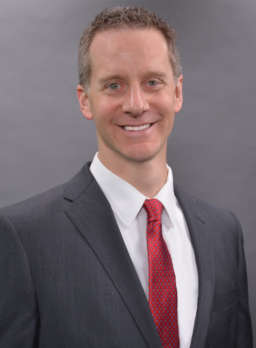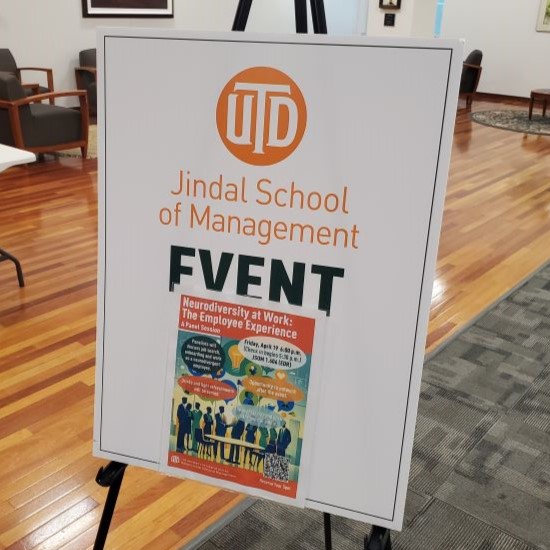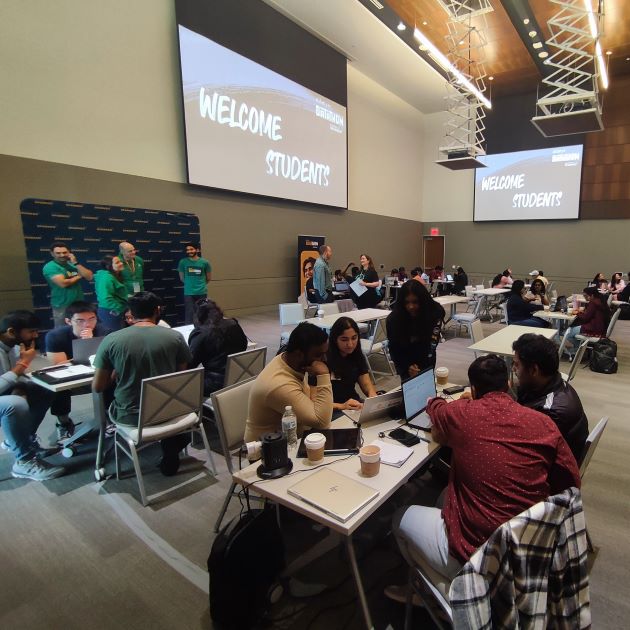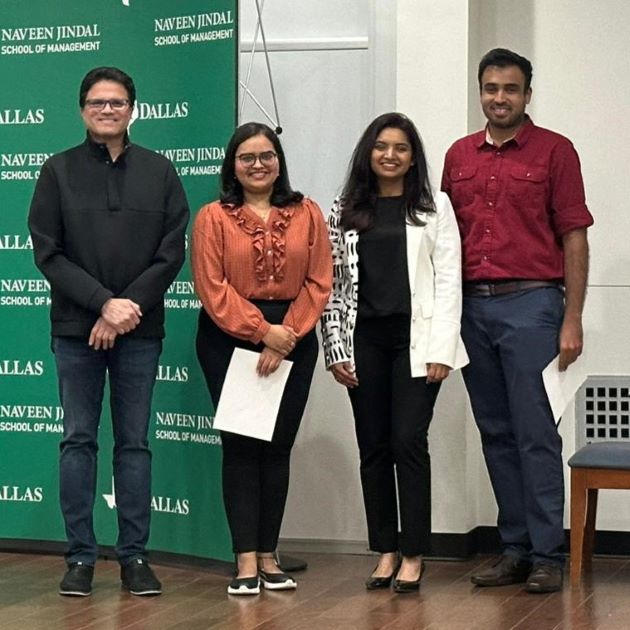


A panel of local physician leaders from various segments of healthcare shared their visions for the future of that large, chaotic and tumultuous industry in an Oct. 5 panel discussion at the UT Dallas Naveen Jindal School of Management.
Healthcare accounts for about 15 percent of the DFW economy, according to the Dallas Regional Chamber, and the panel discussion, “Healthcare Realignment: The Brave New World,” explored solutions for managing and leading healthcare in a unique and different way to find solutions that previously have been unachievable.
The discussion drew an audience of about 200 people, including students in the Jindal School’s BS in Healthcare and MS in Healthcare Management programs, doctors, administrators and other professionals with direct connections to the industry.
Britt Berrett, director of the BS in Healthcare Management program, moderated the panel. It included Dr. Jeffrey Canose, COO and senior executive vice president of Texas Health Resources; Dr. Jim Walton, president and CEO of Genesis Physicians Group; and Dr. Paul Hain, market president, North Texas, Blue Cross Blue Shield of Texas.
The Dallas-Fort Worth Hospital Council (DFWHC) co-hosted the event with the Jindal School at the Davidson Auditorium. DFWHC President and CEO Steve Love gave the opening remarks, followed by Berrett, who provided a brief historical overview of healthcare management education at the Jindal School followed by the introduction of the panelists.
Canose emphasized that transformation and sustainability, from the perspective of healthcare systems, would necessitate significant changes that are less hospital-centric and more value-focused. These changes would include an expansion across the entire continuum of healthcare to help people take ownership of healthy behaviors and achieve better health outcomes.
“We need to diversify what we offer to the community,” Canose said. “If we are truly about health and well-being, we cannot do that with a 4.62-day snapshot in the life of individual patients who happen to have an acute illness, an exacerbation of a chronic disease or a trauma experience.”
Hain framed his remarks around the relationship between healthcare and the insurance industry. That industry has transformed itself, Hain said, from a risk aggregator to an entity that helps negotiate favorable contracts for the businesses that it represents and that now bear the risk for their employees’ healthcare.
“We are trying our hardest to protect businesses from the hardship of paying for healthcare so they can continue to thrive, hire more people and drive our economy,” Hain said. “That’s the reason Blue Cross exists.”
Reiterating Canose’s point that consumers would need to play a key role in keeping healthcare sustainable, Hain used shopping for an MRI medical procedure, which he said can vary in cost from $500 to $3,000, as an example of the role Blue Cross plays in the healthcare marketplace. The company provides consumers with “transparency tools” to help them compare prices and become more informed shoppers, he said.
Hain also commented on his company’s role in helping independent physicians, such as Walton’s 1,500-member collective, combine resources to keep costs lower than are possible when practices are bought by hospital systems. Those remarks segued into Walton’s discussion about what role independent physicians would play in the future of healthcare and how to reconcile market justice, as he called it, with social justice.
“Does the market create justice for people?” Walton asked. “And how do they pay for this expensive, expensive care?”
Walton and fellow physicians concerned about these problems see the market forces that are driving rapid consolidation of healthcare businesses as not only a threat to small-business entrepreneurship but as a hindrance to their mission of social justice. He elaborated on the conflict by further describing the possible motivations of the large healthcare entities.
“It may be more that their mission is to have profitability for the next technology, or the next acquisition, or for the next merger,” Walton said. “There’s some real tension, and we have to have this conversation.”
Walton sees his and other collectives of independent physicians as a response to the rapid consolidation of large healthcare systems — and as an alternative business strategy. It allows independent physicians to protect their opportunity to remain independent while giving them access to capital, which buys them the time and resources needed to redesign care delivery on behalf of patients and their families, he said.





